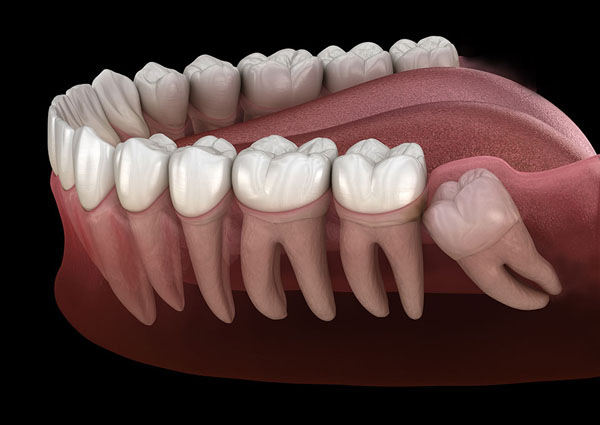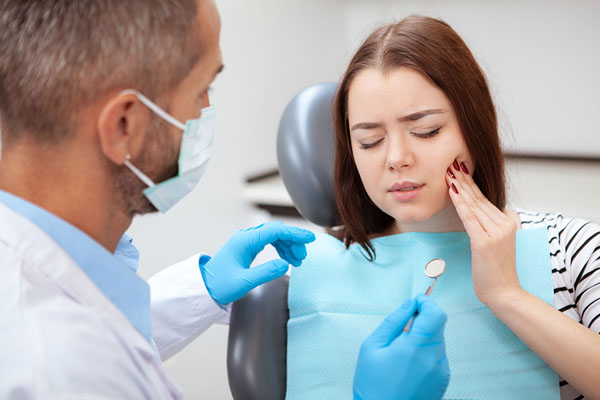Types of Wisdom Teeth Impactions
Are Your Wisdom Teeth Impacted?
Have you ever experienced that nagging pain in the back of your mouth that just won’t go away? You’re not alone. Millions of people deal with wisdom teeth impactions, which often lead to pain, swelling, and even damage to surrounding teeth.
Our Jupiter dentist explains the types of wisdom teeth impactions patients can experience. If you need your wisdom teeth removed, contact our dental office today to schedule an appointment at (561) 744-0677.

What Is a Wisdom Tooth Impaction?
A wisdom tooth impaction occurs as a result of the jaw becoming smaller over time, leaving less room for the third molars to emerge fully. This can lead to a range of oral health issues, such as cavities, gum disease, and infection in the gum tissue. In many cases, the best course of action to deal with an impacted wisdom tooth is a surgical tooth extraction.
Four Main Types of Wisdom Teeth Impactions
There are four main types of wisdom teeth impactions:
- Mesial (angular) impaction
- Vertical impaction
- Horizontal impaction
- Distal impaction
Mesial (Angular) Impactions
Mesial impactions are the most common type of wisdom tooth impaction. In this case, the tooth is partially erupted and angled forward, towards the front of the oral cavity, rather than towards the back. This positioning can cause issues with adjacent teeth, as the impacted tooth may press against them and damage them.
The decision to extract a mesial impacted tooth depends on several factors, such as the angle of the tooth and the extent to which it’s impacted. Dentists usually prefer to carefully observe mesial impactions before determining whether extraction is necessary. This allows them to monitor any changes in the tooth’s position and assess the potential risk to surrounding teeth before taking action.
Vertical Impactions
Vertical impactions occur when the wisdom tooth is in the correct position but remains below the gums. In many cases, these impactions don’t require extraction, as they may not cause significant issues. However, there are instances where a vertically impacted wisdom tooth can exert pressure against the bone or displace a neighboring molar, leading to oral health complications.
In these cases, our dentist may suggest surgical removal of the vertically impacted tooth to prevent further damage and alleviate any discomfort.
Horizontal Impactions
Horizontal impactions, whether partially or fully impacted, happen when the tooth lies entirely sideways beneath the gums, pressing against neighboring teeth. This can result in significant pain and damage to the adjacent teeth, making it essential to address horizontal impactions promptly.
Surgical extraction is the recommended course of action for horizontally impacted wisdom teeth. In some cases, it may also be necessary to remove some of the jawbone to extract the impacted tooth successfully. By removing the horizontally impacted tooth, you can prevent further damage to surrounding teeth and alleviate any pain or discomfort associated with the impaction.
Distal Impactions
Distal impactions are relatively rare and occur when the wisdom tooth is angled towards the back of the mouth. The decision to extract a distal impacted tooth depends on the angle of the tooth and the extent of impaction. In some cases, distal impactions may not require extraction, while in others, the tooth’s position could pose a risk to oral health and require removal.
Symptoms of Impacted Wisdom Teeth
The most common symptoms of impacted wisdom teeth include:
- Pain
- Swelling
- Changes in bite
- Difficulty chewing
- A foul taste in the mouth
- Bleeding
In some cases, the pain can range from mild to severe and may be partially or fully localized to the area of the impacted tooth. However, symptoms may not always accompany impacted wisdom teeth. There might be instances where you have an impacted tooth without any discernible signs. This is why regular dental check-ups are crucial.
How Dentists Determine the Type of Tooth Impaction
When you visit our dentist in Jupiter with concerns about a potentially impacted wisdom tooth, they’ll conduct a dental examination and take X-rays to evaluate the tooth’s position and inclination. This information, combined with your reported symptoms, infections, pain, and any damage to surrounding teeth, will help our dentist determine the type of impaction and the most appropriate treatment plan.
By addressing impacted wisdom teeth as soon as possible, you can maintain your oral health and prevent potential issues such as tooth decay, gum disease, and damage to surrounding teeth.

Frequently Asked Questions
What is the most common type of wisdom tooth impaction?
Mesial impactions are the most common type of wisdom tooth impaction, often referred to as “angular impactions” due to the teeth being partially erupted and angled towards the front of the mouth.
What are the different types of impaction?
There are three types of impaction: soft tissue, partial bony, and complete bony. Soft tissue impaction occurs when there’s not enough room to allow the gum tissue to retract, whereas partial bony impaction is when there’s enough space to allow the wisdom tooth to partially erupt, and complete bony impaction occurs when there’s no space for the tooth to erupt.
What is the most difficult wisdom tooth impaction?
Horizontal impactions are considered to be the most painful type of wisdom tooth impaction, while full-bony impacted teeth present the greatest challenge to extract due to being completely stuck in the jaw.
Contact Al Villalobos, DMD, PA Today for a Consultation
By recognizing the symptoms of impacted wisdom teeth and seeking dental care early on, you can address wisdom teeth’ impactions before they cause significant issues. Don’t let impacted wisdom teeth go unnoticed. Schedule your wisdom teeth consultation with our Jupiter dentist today by calling (561) 744-0677.
